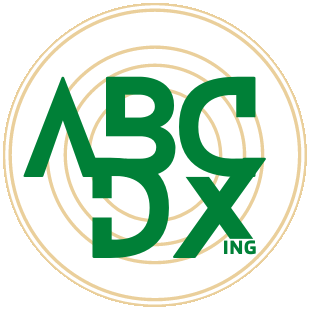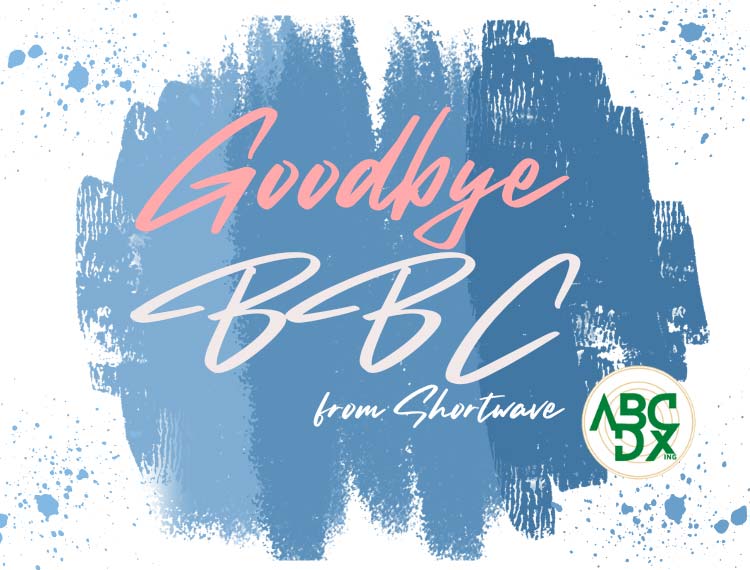Though BitExpress (Germany) is no longer the official name, it represents the fascinating early chapter of a unique campus radio station. Back in 2003, a campus radio station named Funklust, located at Friedrich-Alexander-Universität Erlangen-Nürnberg, embarked on a pioneering venture. They became one of the first radio stations in the world to broadcast digitally on Shortwave (SW) frequencies using DRM. This marked the birth of BitExpress, a testament to Funklust's commitment to exploring new broadcasting frontiers.
Campus Radio BitExpress: Broadcast Beginnings
BitExpress, as it was known then, made its debut in the summer of 2003. The station's first foray into digital broadcasting on Shortwave (SW) frequencies marked a remarkable milestone. This pioneering move utilized Digital Radio Mondiale (DRM) technology, setting them apart from traditional radio stations.
As a Trailblazer Campus Radio in DRM, BitExpress embraced the potential of DRM. At the same time, traditional radio stations relied on analog signals. This technology offered advantages like clearer audio quality, improved reception range, and the ability to transmit additional data services like text messages and emergency warnings.
Digital Revolution on Shortwave
Funklust's use of DRM on SW frequencies was a major milestone. It showcased the viability of digital transmission on a platform traditionally dominated by analog signals. It not only enhanced the listening experience for their audience but also served as a valuable demonstration project for the broader radio broadcasting community.
Beyond Borders: Campus Radio BitExpress Reach Global
BitExpress (funklust) hasn't limited itself to a local audience. Reception reports confirmed that their SW broadcasts could be heard in distant locations like Russia, the United States, and even further afield. This global reach underscored DRM's potential to expand radio stations' footprint for broader transmission.
While the station rebranded itself as Funklust in recent years, BitExpress's legacy lives on. Their pioneering efforts in using DRM on SW frequencies continue to inspire others in the radio broadcasting landscape. The recent modernization of their DRM on SW transmission equipment in 2021 demonstrates their ongoing commitment to this innovative technology. Its journey serves as a testament to the potential of campus radio stations to push boundaries and embrace new technologies.
Objectives and Challenges:
The primary objective of BitExpress in its early DRM broadcasts was likely to expand its listener base beyond FM's limitations. It might also have been driven by a desire to be at the forefront of radio technology.
However, there were also challenges-
a. Limited DRM Receiver Availability
Few DRM receivers were readily available for consumers in the early 2000s, which could have limited the potential audience for BitExpress's broadcasts.
b. Technical Complexity
Setting up and maintaining a DRM broadcasting system is more complex than traditional analog SW.
Despite these challenges, BitExpress's pioneering use of DRM on SW helped pave the way for further exploration of this technology in radio broadcasting.
Campus Radio BitExpress Milestones on the Shortwave Spectrum
a. 2003: BitExpress initiates digital broadcasts on SW using a Telefunken transmitter.
b. 2013: Further innovation – Funklust becomes one of the first radio programs globally to utilize DRM on FM radio.
c. 2021: Funklust modernizes its entire DRM on SW broadcasting equipment, demonstrating continued commitment to cutting-edge technology.
Why BitExpess, the Campus Radio on DRM?
In the early days of BitExpress (now Funklust), launching a digital radio station on Shortwave (SW) frequencies using DRM technology was a bold move driven by several factors:
Limited Reach of Traditional FM: FM radio broadcasts typically have a limited geographical range. BitExpress, likely wanting to extend its reach beyond the immediate Erlangen-Nürnberg area, saw SW as a way to broadcast to a much wider audience potentially.
Experimentation with New Technology: Digital Radio Mondiale (DRM) was still a relatively new technology in the early 2000s. Universities are often at the forefront of technological exploration, and BitExpress, as a campus radio station, might have been keen to experiment with this new form of broadcasting.
Potential Advantages of DRM: Compared to traditional analog SW broadcasts, DRM offers several potential advantages:
Improved Audio Quality: DRM offers near CD-quality sound compared to the static-prone nature of analog SW.
Data Services: Digital RM can transmit not just audio but also text and data, potentially allowing BitExpress to provide additional information alongside their radio programs.
More Efficient Use of Spectrum: DRM transmissions are more efficient in using the radio spectrum than analog SW, allowing more stations to operate on the same frequencies.
How BitExpress Redefined Campus Radio?

The reasons BitExpress started broadcasting from the university campus likely stemmed from a combination of factors specific to student life and the goals of campus radio stations in general:
Providing a Student Voice
Universities are hubs of diverse ideas and perspectives. A campus radio station like BitExpress can offer a platform for students to express themselves, share music, discuss issues relevant to their lives, and potentially reach a wider audience than traditional media outlets
Community Building
Campus radio can foster a sense of community among students, faculty, and staff. It can provide a shared space for entertainment, information, and discussion, potentially creating a stronger bond within the university.
Learning and Skill Development
Being involved with a campus radio station allows students to gain valuable experience in areas like radio production, journalism, music programming, and on-air hosting. These skills can be beneficial for future careers in media or communication.
Promoting Student Activities and Events
BitExpress can promote student-led activities, clubs, and events on campus, increasing awareness and participation.
Alternative Programming
Campus radio often provides programming outside the mainstream, featuring genres or topics not readily available on commercial stations. BitExpress could have aimed to fill a niche in the local radio landscape by offering alternative or student-focused content.
Accessibility
Operating from the university campus potentially offered BitExpress access to resources, infrastructure, and funding that might not have been available otherwise. This could have been crucial in their initial stages of operation. While the specific reasons behind BitExpress's launch might not be publicly documented, these general motivations drive many campus radio stations. Their focus on innovative technology like DRM further highlights their dedication to providing unique and engaging content for their audience.
Endnote of Campus Radio BitExpress
Funklust’s evolution from BitExpress showcases a commitment to innovation, quality broadcasting, and global reach. From pioneering digital shortwave broadcasting to embracing DRM technology, funklust continues to be a beacon of creativity and community engagement. As listeners tune in, they become part of a legacy that bridges generations and transcends borders.
Feel free to explore this remarkable campus radio station and its ongoing impact more!
Funklust , e.V.Ulrich-Schalk-Straße, 3A, 91056 Erlangen, Germany
Email: (as of 24 May 2024, source website of Funklust)
Editor-in-chief: Sebastian Schroth/Lisa-Marie Guja [email protected]
Music editors: Alex Gubert [email protected]
Technology: Felix Leipnitz [email protected]
Technical Information
DAB/DAB+: dabtest(at)iis.fraunhofer.de
DRM-AM/-FM: drmtest(at)iis.fraunhofer.de
MW (analogue): mw-joe(at)iis.fraunhofer.de
Bayerische Landeszentrale für neue Medien (BLM) Institution under public law with legal capacity represented by the President Dr. Thorsten Schmiege
Heinrich-Lübke-Str. 27, 81737 Munich, Germany
Phone: +49 (0)89/6 38 08 – 0, Fax: +49 (0)89/6 38 08 – 140, E-mail: [email protected]







